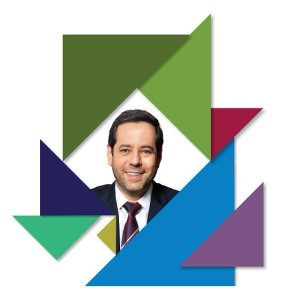Added Value Solutions Optimize Medicine Delivery

STORY INLINE POST
Q: What is unique about Pharma Tycsa?
A: The healthcare industry is looking for distributors with proper infrastructure, systems, ethical practices and a strong transparency policy, which translates into a huge opportunity for us. In our first three months of operations we closed a contract with a public institution to which we distributed products and also created value for our suppliers by managing the delivery of therapies to patients. To do so, we incorporated professional pharmacists in the customer drugstores, something rather uncommon in Mexico. The difference between having clerks and pharmacists in pharmacies is that the former just deliver prescription medicines, while the latter actually analyzes the prescriptions and makes sure they are in accordance with patients’ records. This is a highly valuable service for our customers because it adds a clinical component to deliver better attention to patients. We have also developed a new service called Clinical Breast Cancer Integral Service aimed at delivering high-quality services to patients.
Q: How are integral services transforming the way healthcare services are delivered?
A: The definition of integral services should be clarified because some providers could use the term as a way to avoid disclosure of the full range of services and costs they are charging. Integral services comprise a set of products, services, experience and information to take full responsibility of a certain activity the government does not know how to do or should not invest in doing. Whereas the private sector uses its resources more efficiently, public hospitals do not have enough budget to acquire, maintain and repair equipment, which could easily result in expensive and underutilized equipment. Integral solutions are therefore intended to provide better services to patients, have more positive clinical outcomes, reduce bureaucracy in institutions and manage resources more efficiently as a single, expert provider. Actually, some surgeries cost more for public institutions than for private hospitals so there are more than enough opportunities to optimize processes in the public system. On the other hand, the bargaining power of integral service providers has reached a point in which they are capable of charging high prices and institutions have no option but to accept them. This is something that should be regulated in the short to medium term.
Q: How could public institutions further optimize their processes and how are you helping to do so?
A: Our added value services always try to put patients at the center. I believe the system is moving toward cost optimization through consolidated purchases. The next step for cost reduction is to manage inventories and to keep track of where medicines go and how they are delivered. The process to provide medicines to patients in public institutions consists of purchasing medicines, warehousing, distribution logistics, delivering products to pharmacies and then giving them to patients. There is a great opportunity to reduce costs along this chain. We can get involved in some parts of it while institutions are fully responsible for others, like ISSSTE, that has subcontracted warehousing and logistic services while IMSS has not. Data collected from a 10- year period worldwide show that more than 30 percent of prescriptions are done or processed incorrectly by physicians, nurses, clerks, among others. In Mexico, the rate of error is even higher. We have hired pharmacists in a public oncology hospital in the State of Mexico, where we have already implemented some systems. Last year, we detected 2,000 incidences in a 40-bed oncological hospital so we now have statistics representing the first step to transforming the way medicines are delivered in the country. If drugs are administered to cancer patients incorrectly the efficacy and safety of the treatment can be compromised.
Q: Where do you see the company at the end of the year?
A: We want to incorporate pharmacists in at least two more oncology hospitals and we want to expand our Clinical Pharmacy Integral Service in some others. We are also planning to launch a project for hospitals to incorporate a system that was developed by us to track the actual number of prescriptions delivered to patients. This will make the process more transparent and help public institutions reduce unnecessary costs.























